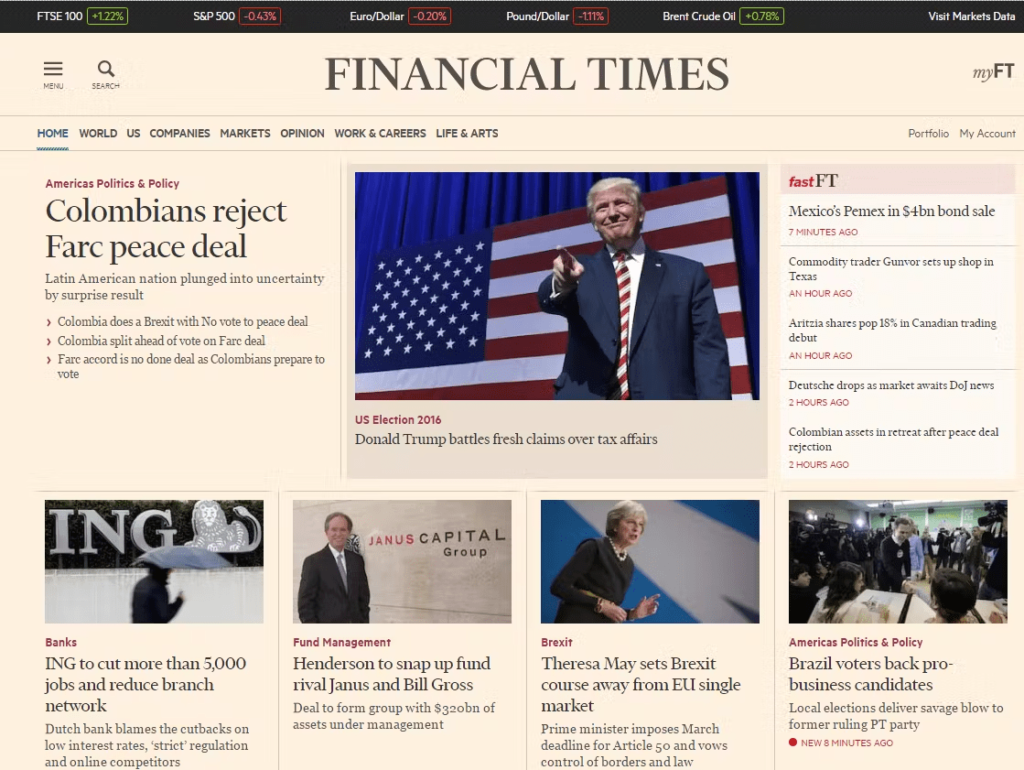
How Many Emails Before They Hate You? Rethinking Cadence, Consent & Inbox Sanity
Your inbox isn’t a suggestion box—it’s a battlefield, and most brands are lobbing grenades instead of sending messages worth opening. Stop carpet bombing customers with “last chance” spam and start giving them a reason to actually care.
I hate e‑mail. I mean, I don’t hate it—I just hate it. Know what I mean? Why is it my job to start every day wading through a sea of junk just to find the ones I actually want? And just when I think I’ve cleaned out the garbage… poof! Daily emails start pouring in from some website I visited once. Why do I get more emails from a store I browsed for five minutes than from people I actually know?
That’s the tension: brands are terrified of unsubscribes but desperate for attention. Customers? They’re just tired.
The Great Inbox Overload
There’s a reason it feels like drowning. According to Omnisend, a global marketing automation platform analyzing billions of messages across industries, 376 billion emails are sent every day in 2024, and by 2027 that number will hit 408 billion. 84.8% of marketing emails make it into inboxes, which means most of what’s clogging your screen isn’t getting stuck in spam filters—it’s landing right where you don’t want it.
And people aren’t handling it well. According to a large‑scale ArXiv behavioral study of 2 million email users, when inbox volume spikes, people reply less, write shorter responses and mentally tune out.
Not everyone gets it wrong, though. Zalando, a Berlin-based e‑commerce giant, doesn’t send a storm of generic promotions. It sends one or two well‑timed, personalized reminders based on what you actually browsed. They’ve figured out what so many brands miss: relevance and restraint can coexist.
So How Much Is Too Much?
Globally, average open rates for well‑maintained lists hover between 30–40% depending on sector. According to Bloomreach, a global e‑commerce and marketing personalization platform analyzing billions of campaigns annually, this range reflects lists that are properly segmented and actively managed.
Unsubscribes spike when brands push past 3–4 emails per week, with 69% of consumers citing “too many emails” as their primary reason for opting out. According to OptinMonster, a leading email conversion and optimization platform, frequency overload is the number‑one driver of unsubscribes across industries.
But there’s a bigger nuance: people tolerate more when they want the content. The New York Times can email multiple daily digests because subscribers expect and value it. When a mattress company tried daily blasts in 2023, their unsubscribe rates nearly doubled in three months. The difference? One delivers time‑sensitive, high‑value information; the other delivers repetitive sales content with little urgency or utility.
And unsubscribes don’t tell the whole story. Plenty of people don’t bother unsubscribing—they just ignore you or let your emails get filtered into the promotions folder graveyard. These quiet disengagements are just as damaging as explicit opt‑outs.

Permission Isn’t Preference
Yes, GDPR, CASL and emerging US privacy laws require explicit opt‑in. But legal permission isn’t the same as actual preference.
Bloom & Wild, a UK‑based online florist, became famous for letting customers opt out of Mother’s Day promotions. According to The Times, this simple change generated 10× more topic‑specific opt‑outs and drove a wave of viral praise without hurting engagement. They earned loyalty by respecting emotional triggers, proving consent is about more than legality.
Contrast that with Carrefour France, which was fined by the CNIL (France’s data protection authority) for sending promotional emails without a clear and accessible unsubscribe option. The case led to widespread customer complaints and reinforced the idea that legal compliance isn’t enough if customers feel cornered or unheard.
Let Customers Choose
Preference centers aren’t optional anymore—they’re survival tools.
Puma lets subscribers pick sports interests, product categories and email frequency. Travelodge offers a “snooze” option for 1–6 months instead of forcing an unsubscribe. Blacks, a UK outdoor retailer, collects gift recipient details and favorite brands to make promotions feel relevant.
Best practice goes beyond a simple unsubscribe or opt‑out. Give customers meaningful control: allow them to set cadence (daily, weekly, monthly), choose the type of content they receive (promotions, product drops, editorial content, transactional updates), select preferred channels (email, SMS, app notifications), and even pause communications for a set period without unsubscribing.
Each of these real-world strategies improved engagement and reduced churn by empowering subscribers to tailor their own experience.
It’s Quality, Not Quantity
This is a big one: relevance trumps cadence.
According to RedEye, which documented the case in a major email optimization study, CareerBuilder cut sends by 72% yet saw conversions rise 50% by focusing only on actively engaged recipients. The New York Times uses segmented, interest‑driven newsletters (from cooking to politics to culture), delivering multiple daily emails without triggering fatigue because each one feels relevant to its audience. Netflix dynamically adjusts frequency based on behavior—ignore three emails, and they slow down. Spotify tailors its “Release Radar” campaigns by listening history, turning emails into something like an event.

Best Practices: One Size Doesn’t Fit All
Getting cadence right isn’t just about how often you hit “send.” It’s about whether your frequency drives meaningful engagement and revenue—and that varies by industry, price point and customer expectations.
Retail / E‑Commerce: 2–4 emails per week for active buyers, 1–2 for everyone else. Zalando’s hyper‑personalized sale alerts are a benchmark. Target open rates above 25%, click‑through above 3%, and revenue per email over $0.10, a realistic benchmark for mass‑market retailers with optimized segmentation, according to Omnisend. For premium or luxury retail, revenue per email is often significantly higher, reflecting higher price points and lower send volumes—making even modest engagement levels highly profitable.
Hospitality & Travel: 1–2 per week, ramping up near bookings. Emirates uses trip countdowns and destination guides that add value. Aim for open rates above 30%, booking conversions over 2% and dwell time over one minute.
Media & Publishing: Daily—or multiple per day if warranted. Financial Times lets readers customize alerts, cutting fatigue. Open rates above 35% and click‑through above 8% are healthy; revenue here often comes indirectly via subscriptions or ads.
NGOs & Nonprofits: 1–2 per month, with bursts during campaigns. UNICEF lets donors pick update frequency, reducing unsubscribes by 28% and boosting recurring gifts. Aim for open rates above 28% and donation conversion around 1–2%.
B2B SaaS / Tech: 1–3 per month, plus onboarding and product triggers. Slack differentiates content for admins vs. end‑users. Watch open rates above 30%, plus product‑usage and onboarding completion as downstream KPIs.Luxury Brands: 1–2 per month. LVMH sends curated, event‑driven previews instead of weekly sales pushes. Target open rates above 40%, click‑to‑open above 15%, and nearly zero tolerance for unsubscribe spikes. A single conversion—a $5,000 handbag, say—can make low‑frequency campaigns wildly profitable

The Framework for Getting It Right
- Ask: Use preference centers to give people control over content and frequency.
- Segment & Test: Track unsubscribes, opens and revenue by cadence.
- Automate Cadence: Adjust dynamically based on engagement.
- Make It Worth Opening: Every email should feel curated, not templated.
- Respect Regional Norms: Cadence tolerance varies by region.
- Track Real Engagement: Unsubscribes aren’t the only signal. Watch open rates, click‑throughs, post‑click behavior, scroll depth, dwell time and whether emails are being filtered or ignored.
The Bottom Line
Your inbox isn’t a hostage situation. Yet some brands behave like it is. If you’re holding customers captive with irrelevant, relentless messaging, they won’t just unsubscribe—they’ll ghost you.
Ask what they want. Test what they’ll tolerate. And only hit send when it’s worth their attention. If your emails are good, they’ll forgive you for showing up often. If they’re not… no frequency strategy will save you.
Sources:
- Omnisend: Global Email Marketing Statistics 2024
- The CMO: Global Email Deliverability Benchmarks 2023
- ArXiv: Email Overload Behavioral Study 2024
- Mailchimp: Email Marketing Benchmarks 2023
- Campaign Monitor: Email Frequency and Engagement Study 2023
- OptinMonster: Why Consumers Unsubscribe 2024
- The Times: Bloom & Wild Case Study 2024
- CNIL: GDPR Enforcement Actions 2023
- RedEye: CareerBuilder and Email Optimization Case Study 2024



